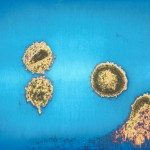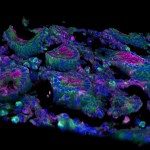Lien vers Pubmed [PMID] – 30814287
J. Virol. 2019 May;93(10)
HIV controllers (HIC) maintain control of HIV replication without combined antiretroviral treatment (cART). The mechanisms leading to virus control are not fully known. We used gene expression and cellular analyses to compare HIC and HIV-1-infected individuals under cART. In the blood, HIC are characterized by a low inflammation, a downmodulation of natural killer inhibitory cell signaling, and an upregulation of T cell activation gene expression. This balance that persists after stimulation of cells with HIV antigens was consistent with functional analyses showing a bias toward a Th1 and cytotoxic T cell response and a lower production of inflammatory cytokines. Taking advantage of the characterization of HIC based upon their CD8 T lymphocyte capacity to suppress HIV-infection, we show here that unsupervised analysis of differentially expressed genes fits clearly with this cytotoxic activity, allowing the characterization of a specific signature of HIC. These results reveal significant features of HIC making the bridge between cellular function, gene signatures, and the regulation of inflammation and killing capacity of HIV-specific CD8 T cells. Moreover, these genetic profiles are consistent through analyses performed from blood to peripheral blood mononuclear cells and T cells. HIC maintain strong HIV-specific immune responses with low levels of inflammation. Our findings may pave the way for new immunotherapeutic approaches leading to strong HIV-1-specific immune responses while minimizing inflammation. A small minority of HIV-infected patients, called HIV controllers (HIC), maintains spontaneous control of HIV replication. It is therefore important to identify mechanisms that contribute to the control of HIV replication that may have implications for vaccine design. We observed a low inflammation, a downmodulation of natural killer inhibitory cell signaling, and an upregulation of T-cell activation gene expression in the blood of HIC compared to patients under combined antiretroviral treatment. This profile persists following stimulation of peripheral blood mononuclear cells with HIV antigens, and was consistent with functional analyses showing a Th1 and cytotoxic T cell response and a lower production of inflammatory cytokines. These results reveal significant features of HIC that maintain strong HIV-specific immune responses with low levels of inflammation. These findings define the immune status of HIC that is probably associated with the control of viral load.


